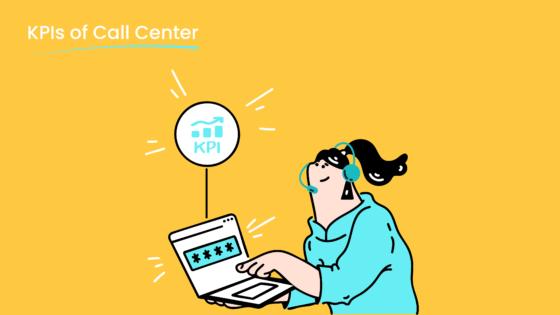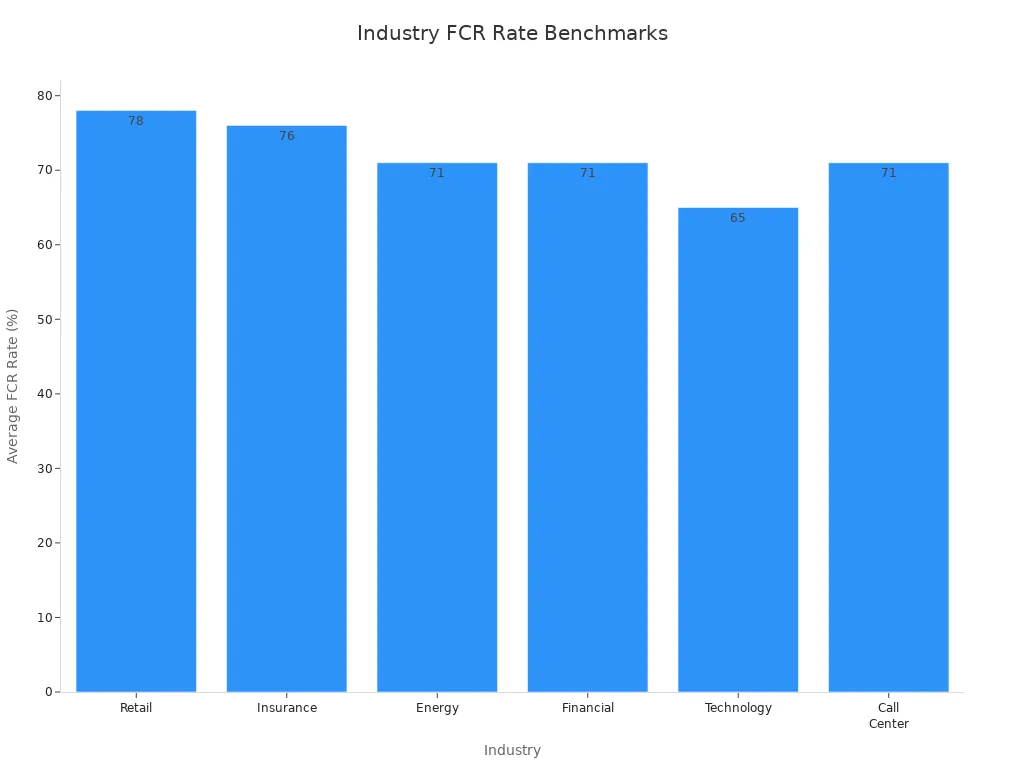How to Improve Call Center Agent Performance with Key Metrics

Tracking the right metrics stands as the most effective way to achieve improvement in any call center. Managers often rely on key performance indicators to measure progress and drive results. The most important call center metrics include:
- Average Handle Time
- First Call Resolution
- Customer Satisfaction Score
- Service Level
- Call Abandon Rate
- Net Promoter Score
- Quality Assurance
These metrics help leaders see how to improve call center agent performance and customer experience. Sobot AI and the Sobot call center offer advanced tools for monitoring calls and boosting service quality. Real-world results show that the right approach to calls leads to lasting improvement.
Why Call Center Metrics Matter

Impact on Agent Performance
Call center metrics play a vital role in shaping agent performance. When managers track key KPIs like Average Handle Time, First Call Resolution, and Agent Utilization Rate, they gain insights into how agents spend their time during calls. These metrics help identify areas where agents can improve communication skills or manage time better. Tracking call center metrics also reveals hidden inefficiencies, such as agents spending too much time switching between applications instead of resolving customer issues.
- Monitoring KPIs allows managers to optimize staffing and scheduling, which balances workload and prevents agent burnout.
- Data-driven decisions based on contact center KPIs support continuous learning and adaptation.
- A balanced approach to metrics ensures that reducing handle time does not lower customer satisfaction.
- Embracing technology, such as AI-powered chatbots, helps agents focus on complex calls and boosts productivity.
Agents who receive feedback based on clear metrics feel more engaged and motivated. Gamification and professional development paths, guided by KPIs, can increase agent engagement and performance by nearly 48%. Automation tools also reduce manual tasks, allowing agents to handle more calls efficiently.
Business Outcomes
Tracking call center metrics and KPIs leads to better business outcomes. Key contact center KPIs like Customer Satisfaction Score, Net Promoter Score, and Customer Effort Score directly link to customer experience and operational efficiency.
- Improving First Call Resolution reduces repeat calls, which increases customer satisfaction and boosts customer retention rate.
- High Customer Satisfaction Scores show that customers are happy with service, making them more likely to return.
- Net Promoter Score measures loyalty and the chance that customers will recommend the business, which supports growth.
- Customer Effort Score shows how easy it is for customers to resolve issues, leading to smoother interactions.
- By focusing on these metrics, companies can reduce costs, shorten wait times, and improve customer retention rate.
Real-time dashboards and analytics help managers spot bottlenecks and make quick adjustments. This approach leads to higher agent performance, better calls, and stronger business results.
Essential Contact Center KPIs
First Call Resolution
First call resolution stands as one of the most important call center metrics. It measures the percentage of customer issues resolved during the first interaction, without the need for follow-up calls. High first call resolution rates indicate that agents solve problems quickly and efficiently, which leads to greater customer satisfaction and improved agent performance metrics.
| Industry | Average FCR Rate |
|---|---|
| Retail | 78% |
| Insurance | 76% |
| Energy | 71% |
| Financial | 71% |
| Technology | 65% |
| Call Center | 71% |

A good first call resolution rate for call centers falls between 70% and 79%. World-class centers achieve rates above 80%. High first call resolution strongly correlates with customer satisfaction. When agents resolve issues on the first call, customers feel valued and experience less frustration. This metric also reduces repeat calls, lowers operational costs, and boosts agent morale.
Improving first call resolution by just 1% can increase customer satisfaction by 1%. Sobot’s Voice/Call Center solution uses intelligent call routing and real-time analytics to help agents reach higher first contact resolution rates. The system tracks every interaction, allowing managers to identify training needs and optimize workflows.
Agilent’s customer service team saw a sixfold increase in efficiency after adopting Sobot’s omnichannel solution. By leveraging AI-powered chatbots and unified data, Agilent improved first call resolution and achieved a 95% customer satisfaction score.
Average Handle Time
Average handle time measures the total time agents spend on each call, including talk time, hold time, and after-call work. This call center metric helps managers understand how efficiently agents resolve customer issues. High-performing call centers in telecommunications target an average handle time between 5 and 6 minutes.
| Metric/Scenario | Value (minutes) |
|---|---|
| Telecom AHT range (various sources) | 2.56 to 8.8 |
| High-performing target AHT | 5 to 6 |
| Case study initial AHT | 6 |
| Case study improved AHT | 5.2 |
Reducing average handle time improves operational efficiency and lowers agent workload. However, focusing only on this metric can harm customer satisfaction if agents rush calls. Sobot’s Voice/Call Center uses AI-powered voicebots, smart call routing, and unified workspaces to help agents resolve calls faster without sacrificing quality. Real-time monitoring and analytics allow managers to balance handle time with other key performance indicators.
Sobot’s analytics dashboard helps managers identify which calls take longer and why. This enables targeted coaching and process improvements, leading to better agent performance and higher customer satisfaction.
Customer Satisfaction Score
Customer satisfaction score (CSAT) is a direct measure of how happy customers feel after interacting with the call center. This metric is usually collected through post-call surveys. Most call centers aim for a customer satisfaction score between 75% and 85%. Scores above 80% signal excellent service.
To increase customer satisfaction, contact centers should:
- Personalize interactions using CRM data.
- Provide 24/7 omnichannel support.
- Offer self-service options like chatbots and IVR.
- Train agents to respond with empathy.
- Minimize call transfers and wait times.
- Collect and act on customer feedback.
Sobot’s omnichannel solution integrates all customer data into a unified workspace. This allows agents to deliver personalized service and resolve issues quickly. AI-powered chatbots handle routine inquiries, freeing agents to focus on complex calls. Agilent used Sobot’s platform to achieve a 95% customer satisfaction score, demonstrating the impact of advanced call center metrics and technology.
Net Promoter Score
Net Promoter Score (NPS) measures customer loyalty by asking how likely customers are to recommend the company. High NPS scores indicate strong customer satisfaction and predict long-term business success. In call centers, an NPS above 50 is considered excellent.
- Promoters (scores 9-10) are loyal and likely to refer others.
- Loyal customers spend up to 67% more than new customers.
- Addressing detractors (scores 0-6) can improve retention by 12%.
Sobot’s analytics tools track NPS alongside other contact center KPIs. Managers can identify service gaps and improve agent performance metrics. High NPS reduces churn, increases retention, and drives revenue growth.
Service Level
Service level is a key call center metric that measures the percentage of calls answered within a set time, such as 20 seconds. The industry standard is the 80/20 rule: answer 80% of calls within 20 seconds. Meeting this target shows that the call center responds quickly and values customer time.
Sobot’s real-time monitoring and smart call routing help teams meet or exceed service level targets. Managers can adjust staffing and workflows based on live data, ensuring prompt responses and higher customer satisfaction.
Call Abandon Rate
Call abandon rate tracks the percentage of callers who hang up before reaching an agent. In retail call centers, the average abandon rate is about 5%. Rates below 3% are considered excellent. High abandon rates often result from long wait times or poor service levels.
To reduce call abandon rates, contact centers should:
- Use real-time monitoring to spot long wait times.
- Offer call-back options through IVR.
- Provide estimated wait times to manage expectations.
- Adjust staffing during peak periods.
- Support agents with AI-powered tools.
Sobot’s Voice/Call Center provides real-time analytics and call-back features to lower abandon rates. The platform’s unified workspace and omnichannel support help agents handle calls efficiently, reducing customer frustration and improving satisfaction.
Quality Assurance
Quality assurance programs ensure that agents deliver consistent, high-quality service. These programs use call monitoring, analytics, and customer feedback to evaluate agent performance metrics. Key components include:
- Monitoring and evaluating recorded calls.
- Using QA scorecards to assess agent behavior.
- Providing targeted training and coaching.
- Tracking KPIs such as customer satisfaction, first call resolution, and average handle time.
- Using AI-driven sentiment analysis for real-time insights.
Regular quality assurance monitoring helps agents improve first contact resolution, reduce average handle time, and boost customer satisfaction. Sobot’s platform offers automated QA tools, real-time dashboards, and actionable feedback. This supports continuous improvement and ensures agents meet high standards for every call.
Agilent’s success with Sobot highlights the value of robust quality assurance. By integrating AI and analytics, Agilent improved agent performance, increased efficiency, and achieved industry-leading customer satisfaction.
How to Improve Call Center Agent Performance

Setting Goals with KPIs
Setting clear goals with KPIs forms the foundation for how to improve call center agent performance. Managers should use a structured approach:
- Define KPIs that match the call center’s main objectives, such as increasing customer satisfaction or reducing average handle time.
- Make goals specific, measurable, achievable, realistic, and time-oriented.
- Collect data using Sobot’s analytics tools, which track calls and metrics in real time.
- Analyze trends and set benchmarks, like raising first call resolution to 80% or lowering call abandon rates below 5%.
- Monitor progress with real-time dashboards and adjust goals as needed.
KPIs such as average handle time, customer satisfaction score, and first call resolution give agents clear targets. These metrics help agents understand expectations and see how their work impacts the call center’s success. Sobot’s unified workspace makes performance evaluation simple and transparent, boosting motivation and accountability.
Feedback and Coaching
Regular feedback and coaching are essential for how to improve call center agent performance. Managers should review calls and metrics, then provide personalized coaching based on each agent’s strengths and weaknesses. One-on-one sessions, peer mentoring, and role-playing help agents practice and improve. Sobot’s real-time monitoring and QA tools allow managers to give data-driven feedback quickly. Balanced feedback, with both praise and constructive advice, encourages agents to grow. Regular feedback also increases agent retention by making them feel valued and supported.
Recognition and Rewards
Recognition and rewards programs play a key role in how to improve call center agent performance. Managers should celebrate agents who exceed KPIs, such as high customer satisfaction or low average handle time. Public recognition during team meetings, visible leaderboards, and branded rewards create a culture of appreciation. Sobot’s analytics help identify top performers using objective metrics from calls. Offering professional development and unique perks also boosts morale and keeps agents engaged.
Continuous Monitoring
Continuous monitoring of KPIs ensures ongoing improvement in call center agent performance. Tracking metrics like average handle time, first call resolution, and customer satisfaction provides insights into strengths and weaknesses. Sobot’s real-time analytics allow managers to spot issues early and optimize processes. Regular KPI reviews align agent goals with business objectives, support optimizing performance, and foster a culture of continuous improvement. This approach helps agents deliver better calls and drives long-term success for the call center.
Common Pitfalls in Call Center KPI Tracking
Overemphasis on Single Metrics
Many call centers make the mistake of focusing too much on one metric, such as average handle time. When leaders push agents to keep calls short, agents may rush through conversations. This can lower service quality and leave customer issues unresolved. Not every call has the same level of complexity, so a single target does not fit all situations. Companies that balance average handle time with other metrics, like first call resolution and customer satisfaction, see better results. A narrow focus on one number can hurt both agent morale and the overall quality of service.
Tip: Always balance speed with quality. Encourage agents to solve problems fully, even if some calls take longer.
Ignoring Agent Input
Ignoring feedback from agents is another common pitfall. Agents work directly with customers and understand the real challenges of handling calls. When managers overlook their input, they miss valuable insights that could improve processes and service quality. Agents can point out issues with outdated scripts or tools that slow down their work. Listening to agent feedback helps leaders spot trends, improve training, and boost team morale. It also leads to better quality in every customer interaction.
- Agents often suggest ways to improve call flows.
- Their feedback can highlight gaps in training or resources.
- Engaged agents deliver higher quality service.
Outdated Processes
Outdated processes can block progress in any call center. When teams rely on old systems or manual tracking, they risk missing important trends in call data. Tracking too many KPIs or using metrics that do not match business goals can cause confusion. This leads to analysis paralysis, where leaders cannot make clear decisions. Quality suffers when teams focus on quantity over meaningful results. Modern tools, like real-time dashboards and unified workspaces, help agents and managers track the right metrics and improve call quality.
Note: Regularly review and update processes to keep up with changing customer needs and ensure high quality in every call.
Sobot Solutions for Call Center Metrics
Voice/Call Center Tools

Sobot provides advanced tools that help call center teams track kpis and drive success. The platform offers a real-time dashboard that displays key call center metrics such as answering speed, queue time, and talk time. Managers can access these dashboards from anywhere, making it easy to monitor calls and agent performance. Sobot enables call monitoring with customizable alert rules. Administrators can set alerts based on call duration, keywords, or customer actions. They can join, take over, or observe calls in real time to ensure quality and success. The system generates comprehensive statistical reports with hundreds of indicators, supporting in-depth analysis of kpis and calls. AI-powered features deliver real-time customer insights, trend forecasting, and rapid report generation. These capabilities help managers make informed decisions and measure success in every call center operation.
- Real-time dashboard for key metrics
- Customizable call monitoring and alerts
- In-depth statistical reports
- AI-powered insights and forecasting
Omnichannel Analytics
Sobot’s omnichannel analytics give call center leaders a unified view of agent performance across all channels. The platform centralizes calls, chats, and tickets in one workspace. This design improves visibility and helps managers track kpis and metrics for every interaction. The following table highlights how Sobot’s analytics support measuring success:
| Report Type | Key Features Supporting Agent Performance Visibility |
|---|---|
| Omnichannel Agent Analysis | Overview of agent activities across calls, chats, and tickets; missed calls; reopened tickets; response and resolution times. |
| Omnichannel Performance Analysis | Tracks response and resolution times for customer issues across all channels, including calls. |
| Omnichannel Volume Analysis | Monitors incoming traffic trends and conversion rates from calls and chats to tickets, showing workload distribution. |
Instant insights and custom reporting allow managers to optimize calls and agent workflows, ensuring success in every channel.
Customer Success Stories
Many organizations have achieved measurable success by using Sobot’s call center solutions. Agilent, a leader in life sciences, improved call center efficiency sixfold after adopting Sobot’s omnichannel platform. The team handled more calls and resolved issues faster, reaching a 95% customer satisfaction score. Sobot’s tools helped Agilent track kpis, monitor calls, and analyze metrics in real time. This approach led to higher agent performance and lasting success. Other clients in retail, finance, and technology have also reported better call center results, improved kpis, and greater customer loyalty. These stories show that measuring success with the right tools transforms call center operations and drives business growth.
Tracking the right call center metrics helps managers improve agent performance and deliver high-quality service. Sobot’s Voice/Call Center and omnichannel solutions give leaders real-time data and analytics to guide decisions. By setting clear goals, monitoring progress, and using targeted coaching, teams can achieve greater efficiency and customer satisfaction. Regularly reviewing and adapting KPIs ensures ongoing success and keeps operations aligned with business goals.
FAQ
What are the most important call center metrics to track?
Managers should focus on metrics like First Call Resolution, Average Handle Time, Customer Satisfaction Score, Net Promoter Score, and Service Level. These KPIs help teams measure agent performance and improve customer experience.
How does Sobot help improve agent performance?
Sobot provides real-time analytics, unified workspaces, and AI-powered tools. These features help managers monitor calls, set clear goals, and deliver targeted coaching. Teams can quickly identify areas for improvement and boost efficiency.
Can Sobot integrate with existing CRM systems?
Yes, Sobot offers seamless integration with popular CRM platforms. This allows agents to access customer data instantly and provide personalized service without switching between multiple systems.
How can call centers reduce call abandon rates?
Call centers can use real-time monitoring, offer call-back options, and adjust staffing during peak times. Sobot’s Voice/Call Center provides these features, helping teams lower abandon rates and improve customer satisfaction.
What results did Agilent achieve with Sobot?
| Metric | Before Sobot | After Sobot |
|---|---|---|
| Service Efficiency | Baseline | 6x higher |
| Customer Satisfaction | 80% | 95% |
| Operational Costs | 100% | 75% |
Agilent improved efficiency, raised satisfaction, and reduced costs using Sobot’s solutions.
See Also
Enhancing Call Center Results Through Effective Monitoring Techniques
Proven Strategies For Managing Call Center Quality Successfully
Essential Tips For Efficient Live Chat Agent Management
Best Call Center Analytics Tools To Use In 2024
Understanding The Efficient Functioning Of Call Center Automation
